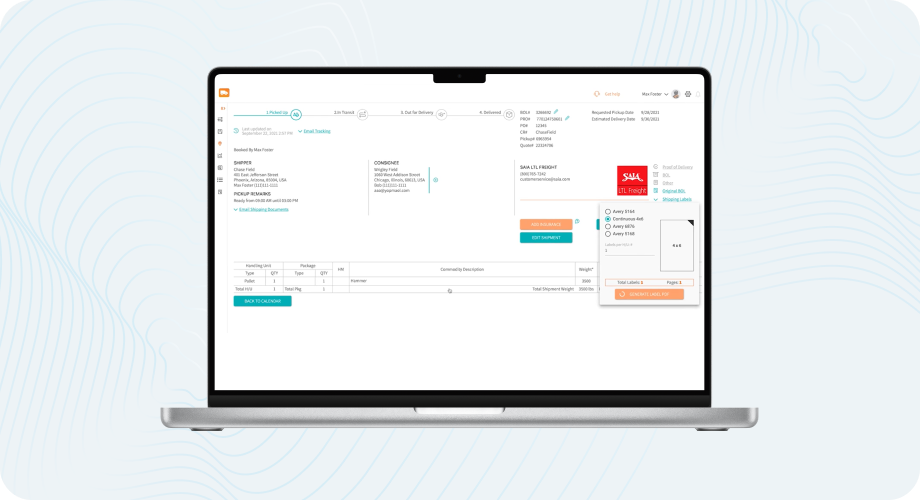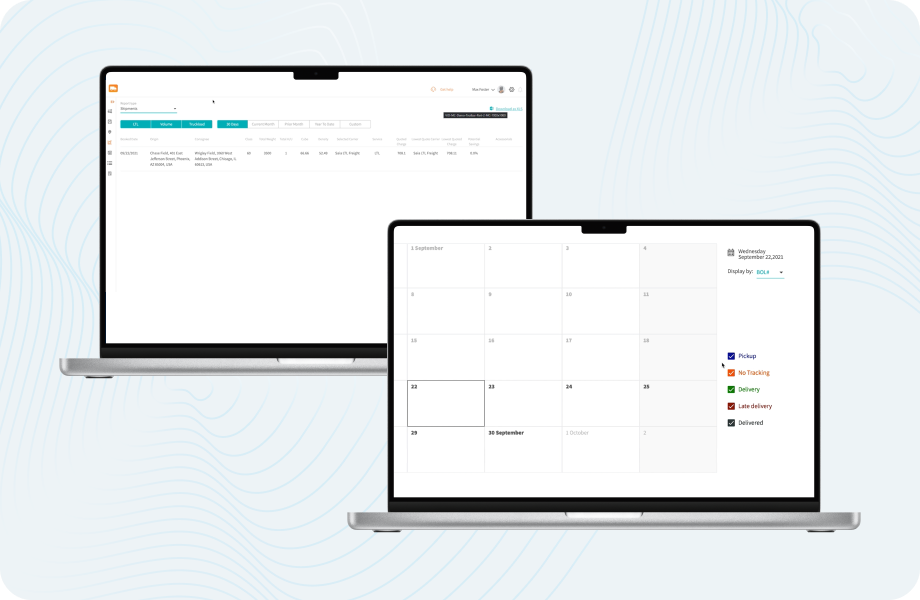
Web Application for Scalable Transportation Management
MyCarrierTMS is a web-based transportation management system designed to connect shippers and carriers directly and simplify freight coordination.IT Craft developed and scaled the platform, automating shipping workflows and enabling real-time rate comparison, booking, and tracking for small and mid-size shippers.
- Team Team: 5 → 25 team members
- Type Shipment and transportation platform
- Industry Logistics, Transportation
- Platforms Web, Mobile (adaptive)
About the project with MyCarrierTMS
IT Craft developed a transportation management platform (TMS) from scratch, enabling clients to book and track shipments, generate documents, and manage logistics operations with ease. The product evolved from an MVP to a scalable cloud-based logistics product.
The platform allows shippers to view quotes, book their shipments, track delivery, manage logistics paperwork, and view analytics on one platform.Carriers benefit from optimized visibility and integration with partner systems.
The client sought a reliable solution that would validate their logistics platform idea and scale with user demand. The product had to support rapid updates, integrate with external APIs, and automate shipment workflows to minimize delays.
The objective was to develop an entire logistics platform that is constantly online, easy to comprehend, and automated. It should manage more users and complex operations as they increase.

Client’s expectations
- Build an MVP for less-than-truckload (LTL) shipment coordination
- Deliver a modular, scalable platform ready for full-truck-load (FTL) expansion
- Automate quoting, booking, and shipment tracking workflows
- Integrate third-party services (project44, Stripe, Recurly)
- Ensure high availability and performance with Azure Cloud architecture
- Enable rapid updates and system growth
Technologies:
 Angular
Angular .NET
.NET TypeScript
TypeScript Azure SQL
Azure SQL Azure Cloud
Azure Cloud MongoDB Atlas
MongoDB Atlas
The client came with a strong vision to streamline logistics workflows for smaller shippers. Our role was to deliver the MVP, expand functionality, and guide the transition to a microservices-based architecture that could support thousands of users and continuous updates.

We delivered:
- Web-based shipment coordination platform for shippers and carriers
- Real-time rate comparison, document generation, and shipment tracking
- Integration with APIs for pricing, payments, and mailing
- Transition from monolith to microservices with CI/CD pipelines
- 24/7 platform availability with auto-scaling Azure infrastructure
- Automation of testing, releases, and infrastructure maintenance
To bring this vision to life, IT Craft applied its experience in web app development to build a multifunctional transportation platform with intuitive UX and scalable cloud architecture.
Results of the collaboration
MyCarrierTMS evolved into a leading logistics platform for small and mid-size shippers, praised for its ease of use and powerful automation capabilities.
Key outcomes included:
- Successful MVP launch followed by expansion to full-truck-load (FTL) shipments
- Platform scaled from 5 to 25 team members, supporting constant development
- Seamless microservices migration with 99.97% availability
- Fully automated shipment management, rate quotes, and exception tracking
- Positive user feedback and multiple rounds of investor funding
To support efficient freight coordination and logistics process automation, we delivered a custom transportation management platform built for scale and flexibility. Explore our logistics development solutions to launch your own high-performance logistics solution.